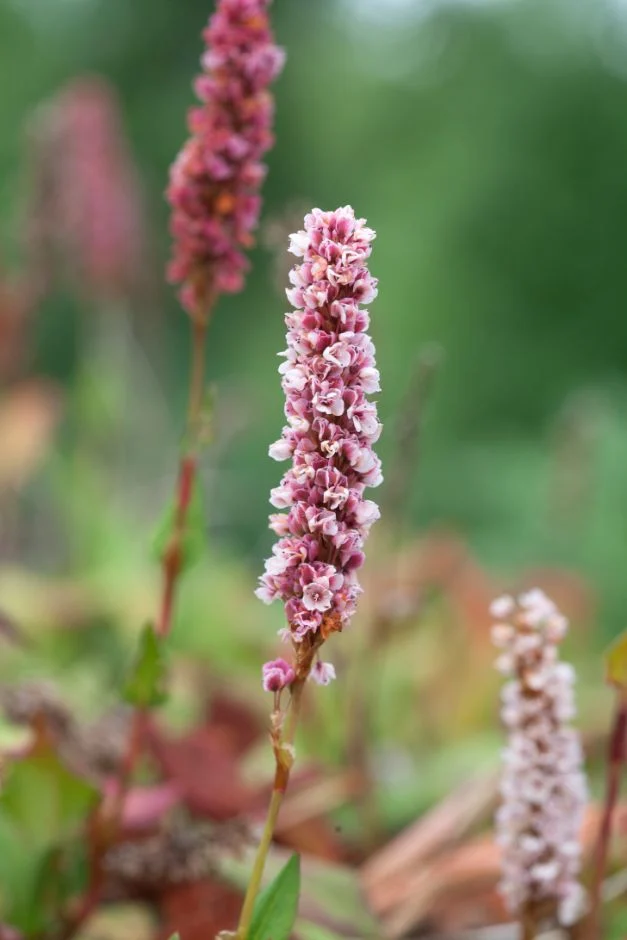Bistorta affinis
lesser knotweed
A mat-forming herbaceous perennial about 25cm high with elliptic to lance-shaped dark green leaves, 5-15cm long, which turn red-bronze in autumn, and from midsummer to mid-autumn spikes 5-8cm long of flowers, each 5mm long, which open bright reddish pink, fade to pale pink, and then turn brown during winter; it is an excellent ground-cover plant

Buy this plant
Size
Ultimate height
0.1–0.5 metresTime to ultimate height
2–5 yearsUltimate spread
0.5–1 metresGrowing conditions
Moisture
Moist but well–drainedpH
Acid, Alkaline, NeutralColour & scent
| Stem | Flower | Foliage | Fruit | |
| Spring | Green | |||
|---|---|---|---|---|
| Summer | Pink | Green | ||
| Autumn | Pink | Bronze Red Green | ||
| Winter | Brown | Bronze Red Green |
Position
- Full sun
- Partial shade
Aspect
South–facing or North–facing or West–facing or East–facing
Exposure
Exposed or Sheltered Hardiness
H7Botanical details
- Family
- Polygonaceae
- Native to GB / Ireland
- No
- Foliage
- Evergreen
- Habit
- Matforming
- Genus
A genus of herbaceous, rhizomatous perennials with erect, unbranched stems, bearing short terminal spikes of small, white or pink, bell-shaped flowers
- Name status
Correct
- Plant range
- Himalaya
How to grow
Cultivation
Grow in moist but well-drained soil in sun or partial shade
Propagation
Propagate by seed, sown in containers in a cold frame in spring, or by division in spring or autumn
Suggested planting locations and garden types
- City and courtyard gardens
- Cottage and informal garden
- Low Maintenance
- Flower borders and beds
- Garden edging
- Underplanting of roses and shrubs
- Banks and slopes
- Ground cover
Pruning
No pruning required
Pests
Generally pest-free
Diseases
Generally disease-free
Get involved
The Royal Horticultural Society is the UK’s leading gardening charity. We aim to enrich everyone’s life through plants, and make the UK a greener and more beautiful place.